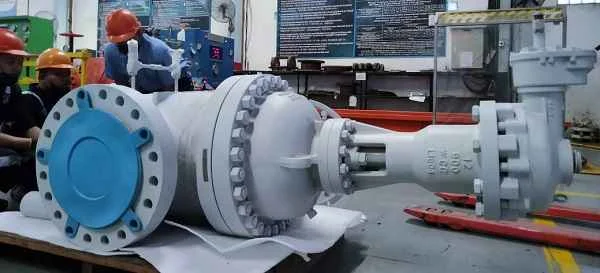What if facing a new project or modifying an existing installation and there is a need for a valve, can you find out what type of valve is appropriate for the project?
It is possible that determining the type of valve required will experience a little difficulty.
And here's the solution, how to determine the type of valve according to project needs which can be done in the following 2 steps:
- Determine the required valve function
- Suitability in the field
The following are several options in determining the type of valve according to the function needed.
Use valves to close and open media if the media flow path is a straight path with small flow resistance and is usually selected as the valve for media cut-off and open.
Use the valve to control the flow if you want the amount of media you want to flow. Choose a valve such as a globe valve because the seat size is proportional to the closing stroke. Swivel valves (plug valves, butterfly valves, ball valves), clamp valves and diaphragm valves can also be used for retard control, but are usually only available within a limited range of valve sizes.
Use valves for switching if commutation separation is required. Ball valve and plug valve types are more suitable for this purpose but other types of valves can be used to separate commutations by connecting two or more valves.
Use a valve for suspended particulate media if the media has suspended particles capable of wiping across the sliding surface along the sealing surface. If the closing motion of the cover to the valve seat is vertical, it is possible to trap particles, so the valve is only suitable for very clean media unless the material of the sealing surface allows particle incorporation. The ball valve and plug valve have a wiping action on the sealing surface during the opening and closing process, so they are suitable for use in media with suspended particles.
2. Suitability in the field
The second step in determining the type of valve according to project needs is to ensure compliance with conditions in the field, namely:
Ensure the use of valves, for equipment or devices as well as valve environmental conditions, media, working pressure and working temperature.
Identify nominal diameter and method of connection between pipe and valve whether flange, threaded or welded connection
How to operate the required valve, manually, electrically, electromagnetically, pneumatically or hydraulically.
According to the medium, working pressure and working temperature, the casing material and valve internal parts are selected, whether to use gray cast iron casing, malleable cast iron, ductile iron, carbon steel, alloy steel or copper alloy.
If you are going to use an automatic valve, determine the allowable flow resistance, release capacity and back pressure according to different needs, then determine the nominal diameter of the pipe and the diameter of the seat hole.
Determine the selected valve geometric parameters including structural length, shape and size of the flange connection, dimensions of the direction of valve height after opening and closing, bolt hole size, number of joints and overall valve dimensions.
Understand the nature of the working medium whether it contains solid particles, toxic, flammable or explosive media
Notes:
If the valve is to be used for control purposes, the following additional parameters must be specified namely method of operation, maximum and minimum flow requirements, pressure drop for normal flow, pressure drop at shutdown, maximum and minimum inlet pressure for the valve.
If you are still experiencing difficulties in selecting a valve even though you have implemented the 2 steps above, there is nothing wrong with asking for information assistance from the valve manufacturer Engineering.
Loading posts


